Don't wanna be here? Send us removal request.
Photo

Takeluma, by Peter Cho, 2005
Takeluma is an innovative alphabet that displays the rhythms and emphases of human speech. Each letter relates to the visual quality of a consonant or vowel sound. The characters are different from any known alphabet, but each glyph has an analog within the English alphabet. Language flows into a single expressive line. This image represents part of the Neil Armstrong quote, “That’s one small step for man, one giant leap for mankind.”
0 notes
Photo

Cabspotting, by Stamen design with Scott Snibbe, Amy Balkin, Gabriel Dunne and Ryan Alexander, 2006–8
To track the movement of taxis around the San Francisco Bay Area, Global Positioning System (GPS) devices were attached to the vehicles. Lines are drawn to connect the GPS data points, showing the taxis’ paths as they navigate the city. The city grid and circulation patterns are revealed through line density.
0 notes
Photo

Mural (detail), by Ken C. Knowlton and Leon Harmon, 1966
A series of photographs were transformed into images composed of engineering symbols. Each point was represented as a grayscale value, then replaced by a graphic symbol.
4 notes
·
View notes
Photo

Painting #207 - N, by Vasa Mihich, 2004
Mihich is a sculptor and painter, but he started sketching with computers in 1998. He works with fixed algorithms that sometimes introduce the element of chance. This painting was inspired by code repetition processes.
0 notes
Photo
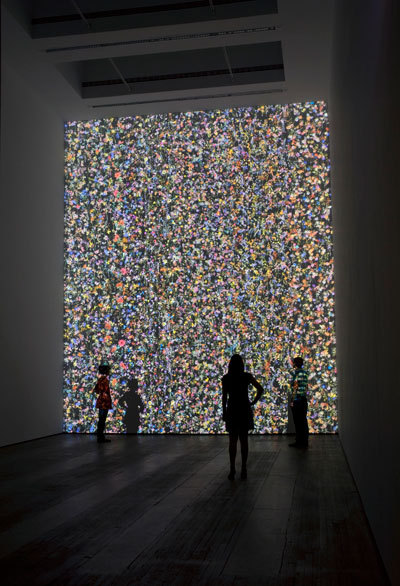
Daisy Bell, by Jennifer Steinkamp, 2008
This massive undulating wall projection is composed of software models of poisonous flowers. Viewers are often overwhelmed by the detail and scale of repetition made possible through Steinkamp’s software.
0 notes
Photo

PSC 31, by Mark Wilson, 2003
These images explore repeated geometric forms and transformations. They are an extension of Wilson’s programmed works from the early 1980s.
0 notes
Photo
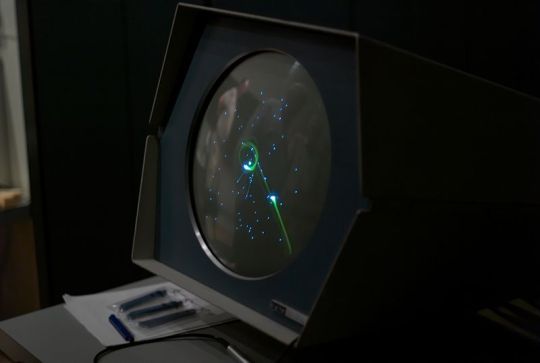
Spacewar!, 1962
This early video game simulates a space battle between two ships. Each ship can rotate left and right, thrust, and fire. A star in the center of the screen pulls each ship into its gravitational field. Here, it’s seen running on a DEC PDP-1 computer.
0 notes
Photo

AARON, by Harold Cohen 1973–present
The AARON software creates original drawings based on the rules encoded in it. Over the last thirty years, the software has advanced from drawing basic geometric forms to human figures, from black-and-white drawings to color prints.
0 notes
Photo
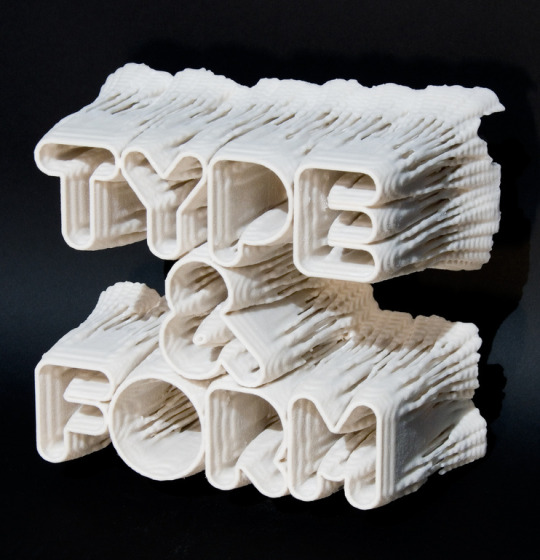
Print magazine cover, by Karsten Schmidt of PostSpectacular, 2008
A reaction-diffusion system was used to create the cover for the August 2008 issue of Print magazine. A 3-D form was made using code; it was then fabricated using a 3-D printer.
0 notes
Photo

Sweep, by Erik Natzke, 2008
Natzke creates his images with custom drawing software that allows him to turn parameters on and off while he draws on-screen.
0 notes
Photo

Untitled V, by James Paterson, 2005
Paterson’s Objectivity Engine software uses random values to define the color, position, and rotation of his small drawings to make a larger collage. Each time the software is run, a different composition emerges within the space of the parameterized limits.
0 notes
Photo
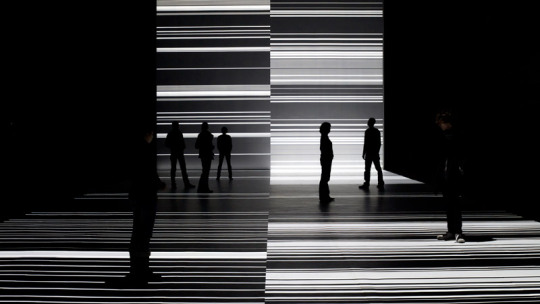
Test pattern [no1], by Ryoji Ikeda, 2008
In this audiovisual installation, the sound from the loud speakers is converted in real-time to a sequence of barcode patterns displayed on the monitors. Ikeda explains: “The velocity of the moving images is ultrafast, some hundreds of frames per second at certain points, providing a performance test for the devices and a response test for visitors’ perceptions.”
0 notes
Photo
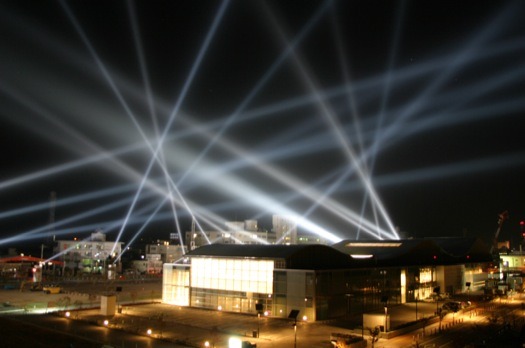
Amodal Suspension, by Rafael Lozano- Hemmer, 2003
Lozano-Hemmer used incoming text messages to control the light display above the Yamaguchi Center for Arts and Media (YCAM) in Japan. The frequencies of letters were translated into flashes of light in the night sky above the museum.
0 notes
Photo

ElectroPlastique, by Marius Watz, 2009
Inspired by the work of Victor Vasarely, Watz used a regular grid that deforms progressively over time. Changes in the grid appear as ripples of evolving shapes in bright color. Eventually, the grid is ripped apart, leaving the shapes to float freely.
0 notes
Photo

Skull (i) by Robert Lazzarini, 2000
3-D human skulls was created using computer modeling techniques. First the skull was scanned and distorted, then it was fabricated using resin, bone, and pigment to create an unsettling series of replicas.
1 note
·
View note